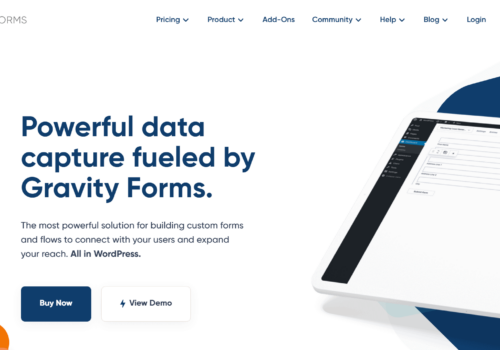These days customers want to communicate with brands through multiple channels and devices such as mobile apps, chatbots, digital assistants, augmented or virtual reality, and others.
However, having CMSes and tools to serve content for each new channel is no longer a viable strategy and isn’t scalable.
Hence, businesses of all sizes are increasingly moving to a SaaS-based platform known as a headless content management system, to improve the speed and agility of digital experiences.
Headless CMS, also known as Decoupled CMS, is a content management system that works independently from the front-end presentation layer.
In contrast to traditional CMS systems, headless CMSs are APIs that manage and store content, while a separate presentation layer is responsible for displaying that content on the website.
This decoupling allows developers to create a website or application with any technology they choose and have the CMS manage the content.
Credits : https://dri.es/headless-cms-rest-vs-jsonapi-vs-graphql
Benefits Of Using A Headless CMS 2024
1. Omnichannel Content Delivery
With a traditional CMS, the content is often tied to a specific template or theme, which can make it difficult to display that content on different platforms or devices.
With a headless CMS, the content is decoupled from the presentation layer, making it much easier to display that content on different platforms, such as web, mobile, or even IoT devices.
This allows for greater reach and engagement with customers, as well as the ability to deliver personalized experiences across different platforms. It also enables businesses to be more agile in their marketing approaches and saves them time and money.
2. Future-proof Development
When it comes to implementation, a headless CMS can be integrated with any type of front-end or application, including web, mobile, IoT, and more.
This allows developers to stick to their favorite tools and frameworks like JavaScript, React, Vue.js, Angular and others to build the front end of the application and connect it to the headless CMS using APIs.
As a result, this helps in reducing development costs and also enables the developers to work independently on the front-end and back-end, and also allows them to make changes to the front-end without affecting the back-end and vice-versa.
Also, you eliminate much of the unnecessary hassle developers have to deal with and put their focus and creative energy onto more purposeful assignments.
3. Streamlined Development Process
With a traditional CMS, developers often have to work with both the CMS itself and the presentation layer, which can add complexity to the development process.
With a headless CMS, developers can focus on the back-end development of the CMS, while designers and front-end developers can focus on the presentation layer.
This can lead to faster development times and a better overall user experience.
4. Speed and Scalability
A headless CMS is more scalable than a traditional system because it decouples the front end and back end. This means that the front end and back end can be scaled independently, allowing for greater control over how resources are allocated.
Also, this allows the front to be cached, reducing the number of requests that need to be made to the backend which helps improve the user experience and reduce the load on the backend.
5. No Technical Expertise is Required
With Headless CMS your code and content are separate. This allows content creators to easily create and manage content without having to worry about how it will look when it is displayed on the website or the presentation layer.
6. Enhanced Security
Because headless content is separated from the presentation layer it is less vulnerable to attack because the API can be hidden behind one or more layers of code, making it more secure.
For example, by not exposing the back end to external parties, the risk of hacking and data breaches is reduced.
7. Reusability
The decoupled architecture of a headless CMS allows for content reuse across multiple platforms and channels. This can include web and mobile apps, chatbots, virtual and augmented reality, and more.
8. Improved User Experience
A headless CMS allows for a more tailored user experience. By separating the front-end and back-end, developers can create a more personalized experience for different devices and platforms.
9. Better Search Engine Optimization
A headless CMS allows for better control over the content, which can help to improve search engine optimization. This is because the front end can be optimized for search engines, while the back end can be used to manage and update content.
10. Better Integration with other tools
A headless CMS can be integrated with other tools such as analytics, search, and personalization engines, allowing for more functionality and better data analysis.
11. Cost-effective
A headless CMS can be more cost-effective than traditional monolithic systems. This is because it allows for faster development and deployment cycles, and can also reduce the need for specialized skills and resources.
Top 10 Use Cases For Headless CMS 2024
1. Multi-channel content delivery
Headless CMS allows for the creation of content once and then publishing it to multiple channels, such as web, mobile, IoT, etc. This can save time and resources, and improve consistency across channels.
2. Progressive web apps (PWA)
PWAs are web applications that function like native mobile apps and can be accessed offline. A headless CMS can be used to deliver content for PWAs, allowing for a seamless user experience across different devices.
3. IoT
Internet of Things (IoT) devices, such as smart speakers, can be integrated with a headless CMS to deliver personalized content to users.
4. Website Redesign
A headless CMS allows for a redesign of a website without having to rebuild the entire CMS. The front end can be redesigned while the back end remains unchanged.
5. E-commerce
A headless CMS can be integrated with e-commerce platforms to manage product information and other content, allowing for a seamless user experience.
6. Personalization
Headless CMS allows for personalized content delivery, by leveraging data from various sources to deliver content that is tailored to the individual user.
7. Microservices architecture
With headless CMS, different parts of a website or application can be built and managed independently, making it easier to scale and maintain.
8. Decoupling the frontend and backend team
A headless CMS allows for greater flexibility for the frontend and backend teams, as they can work independently of each other without affecting the other’s work.
9. Accessibility
Headless CMS allows for the accessibility and translation of content into multiple languages.
10. Analytics
Headless CMS can be integrated with analytics tools to track user engagement and gain insights into user behavior.
To conclude, a headless CMS is a powerful tool that can provide a great deal of flexibility and efficiency in the management and display of digital content.
With the ability to decouple the content from the presentation layer, headless CMSs make it easy to display content on different platforms and devices and streamline the development process.
These benefits make a headless CMS an ideal choice for organizations that need to manage and deliver content across multiple platforms and channels.
Quick Links:




